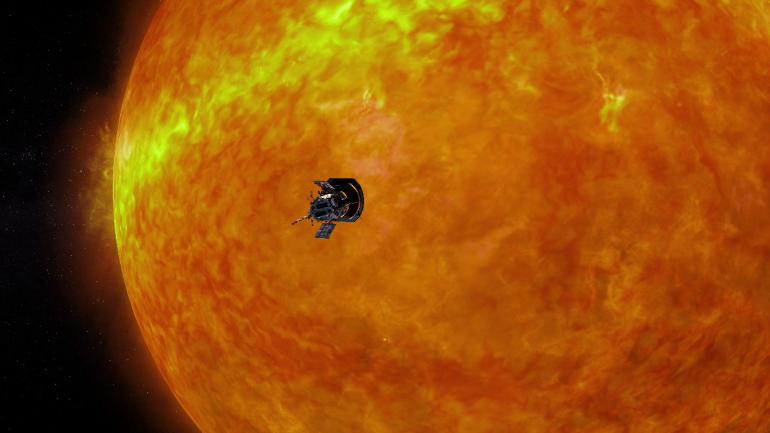
Parker Solar Probe began this solar encounter on March 30, and it will conclude on April 10 | Illustration via Nasa
The National Aeronautics and Space Administration's (Nasa) Parker Solar probe has successfully completed its second approach to the Sun.
This voyage to the Sun is bound to bring us closer to our star than ever before. This is a first-of-its-kind mission to a star.
PERIHELION
The maneuver, called a perihelion, resulted in a closest approach on April 4. The spacecraft was about 24 million km above the surface of the Sun.
Parker Solar Probe was travelling at 2,13,200 miles per hour during this perihelion, and is now entering the outbound phase of its second solar orbit, Nasa said in a statement on Friday (April 5).
"The spacecraft is performing as designed, and it was great to be able to track it during this entire perihelion," Nickalaus Pinkine, Parker Solar Probe mission operations manager at Johns Hopkins Applied Physics Laboratory, or APL, in Maryland, said.
"We're looking forward to getting the science data down from this encounter in the coming weeks so the science teams can continue to explore the mysteries of the corona and the Sun,"Pinkine added.

On final three orbits, Parker Solar Probe will fly to within 6.2 million kilometres of Sun’s surface | Infographic via Nasa
PARKER SOLAR PROBE
Launched on August 12, 2018, the Parker Solar Probe, Nasa's historic small car-sized probe, will make a steady journey to come closer to the Sun until it makes its closest approach at 3.8 million miles.
Throughout its mission, the probe will make six more Venus gravity assists and 24 total passes by the Sun.
The spacecraft in January completed its first orbit of the Sun, reaching the point in its orbit farthest from our star, called aphelion.
For the second perihelion, the Probe began the solar encounter on March 30, and it will conclude on April 10.
The solar encounter phase is roughly defined as when the spacecraft is within 0.25 AU - or 23,250,000 miles - of the Sun.

Solar Probe Plus spacecraft with solar panels folded into shadows of its protective shield, gathers data on its approach to Sun | Photo from JHU/APL
One AU, or astronomical unit, is about 93 million miles, the average distance from the Sun to Earth, Nasa said.
Boffins are hoping that the $1.5 billion mission will shed light on not only our dynamic Sun but the billions of other yellow dwarf stars - and other types of stars - out there in the Milky Way and beyond.
The Sun may be granting us life but it also has the power to play havoc with spacecraft in orbit, and communications and electronics on Earth.



No comments:
Post a Comment